Search Results for 'Joe Young'
12 results found.
The Merryweather
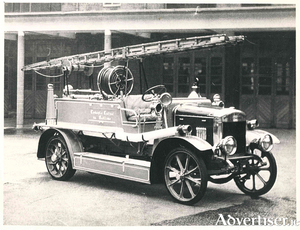
Moses Merryweather and his son Richard lived in Clapham, London and they worked with the engineer Edward Field on putting his design of a vertical boiler onto a horse-drawn platform.
Review of the sporting year
The colourful look back on the year of sport in Galway by Ralph O'Gorman has become an iconic part of the New Year's reflection on the event on and off the field and tracks over the past twelve months. Enjoy.
From trams to buses

When the Galway-Salthill Tramway ceased trading in 1918, it caused a problem for locals who had been using the service as public transport so a group of local businessmen came together on April 5, 1919 to register The Galway General Omnibus Company Limited as a public company. The directors were Thomas McDonough, Joe Young, Robert Mackie, Michael Crowley, Philip O’Gorman, Martin Hynes and Martin Finan. John Leech was the secretary and Joseph Garvey the manager.
Joe Young’s aerated waters
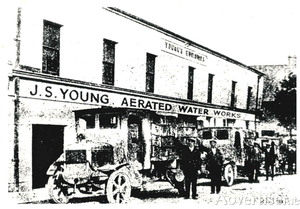
Joseph Young was appointed manager of Messrs Thomas Tracey’s Mineral Water Works and Licensed Premises in Mary Street after the death of Thomas Tracey. He later married the niece of Mrs Tracey, Miss Edith O’Connor of Clifden, and Mrs Tracey signed over the works to Joe Young on the marriage.
Sickeen/Suckeen
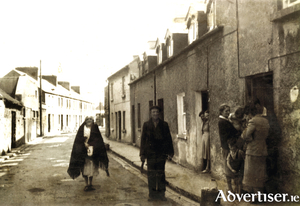
According to O’Donovan’s Ordnance Survey Letters from 1839, “Suckine is now pronounced Suicín, which is, out of satirical humour frequently called Suicín na Mallacht, that is “Sickeen of the Imprecations or Curses”. It is written Sickeen Dyke in the Name Book and described as lying where the road from Galway to Menlo crosses the flooded land at Coolagh.”
The Galway General Omnibus Company
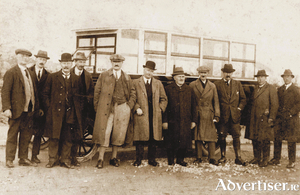
The first regular public transport service in Galway was run by the Galway and Salthill Tramway Company which started business on October 1, 1879, and by 1885 was being used by in excess of 105,000 passengers per year. During World War I, most of the company’s best horses were commandeered by the British Army and there was more and more competition from motorised vehicles, so the tramway ceased trading in April 1918.
Christabel Pankhurst in Galway

Our image this week is of a newspaper advertisement for an extraordinary meeting that took place in the Town Hall 100 years ago today.
Remembering Tom McHugh

This is the Galway football team that played Tyrone in the 1956 All-Ireland semifinal in Croke Park. They are, back row, left to right: Seán Purcell, Gerry Kirwan, Joe Young, Jack Kissane, Frank Evers, Mattie McDonagh, Tom McHugh, and Billy O’Neill. In front are Mick Greally, Tom ‘Pook’ Dillon, Sean Keely, Jack Mangan, Frank Stockwell, Jack Mahon, and Gerry Daly. The first score in the game was a brilliant point by Galway’s Tom McHugh. Galway won a thrilling close game that featured a high degree of sportsmanship, and went on to beat Cork in the final.
Mícheál Walsh, patriot
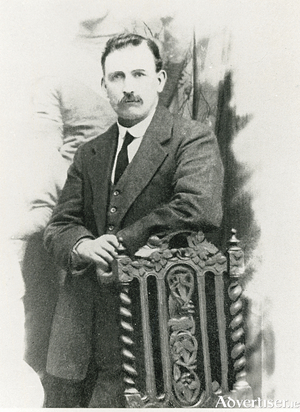
Mícheál Walsh was a native of Headford who bought the Old Malt pub and grocery in High Street c1906. He was a Republican and a member of the Urban Council. He once proposed at a meeting that the idea of toll booths, of collecting tolls from people bringing goods into the city, should be extended to include the docks in order that they might levy any ships coming in to the docks, including Navy vessels. This was too much for his fellow (Unionist) councillor Joe Young, who protested, “Sure if that was the way, no British naval vessel would ever come in to the docks.” “I rest my case,” said Mr Walsh.


